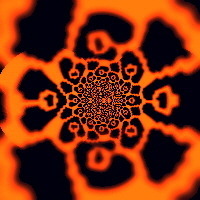알고리즘 & 자료구조
- Universal Hashing 이해하기 2023.09.16
- Time complexity , Big O notation 2018.05.14
- int 숫자를 char 숫자로 변환 2016.04.10
- 원할때 호출 할 수 있는 - 지연 함수 2014.04.29
- BSP 트리 자주 묻는 질/답들로 구성된 페이지 2013.06.08
- Hash Functions (continued) - Fowler/Noll/Vo Hash 2013.06.04
- 점진적 메시 - Progressive Meshes 2013.05.27
- 분할 표면 이론( Subdivision Surface Theory ) 2013.05.27
- 해쉬함수 2013.05.23
- LUT (Lookup Table) 룩업테이블 : 미리 계산된 테이블 2013.05.19
- 메모리 폴 2013.05.12
- AVL트리(Adelson-Velskii / Landis) 2013.04.14
- BSP (Binary Space Partition) 2013.04.14 1
- dPVS occlusion culling 2013.04.14
- PVS(Potentially visible set) 2013.04.14
- K-d 트리 2013.04.14
- '마인 크래프트' (영상) 2013.01.26
- P vs NP 문제 이야기 2012.12.23
- 순회 세일즈맨 문제(TSP) 2012.12.23
- 해밀턴회로 2012.12.23
- 근의 공식 알고리즘 소스코드 2012.11.02
- Red-Black Tree 2012.11.01
- 반올림&반내림 함수 , 소수점자리 반올림&반내림 함수 2012.10.31
- 심플 다각형, 컨빅스홀 결과화면들.. 2012.10.31
- C++ 로 짠 스택 계산기 2012.10.31
- 그래프 정리 2012.10.31
- AOE Network( 작업 공정의 최장, 최단 시간 알아보기 ) 2012.10.31
- 순환없는방향성그래프(DAG) 에서 사용할 수 있는 위상정렬(Topological Sort) [순서적공정모델링] 2012.10.31
- 방향그래프 , 강한결합요소(순환하는 부분 찾기) 2012.10.31
- 가중그래프(최소비용신장트리, 최단경로찾기) 정리 2012.10.31
